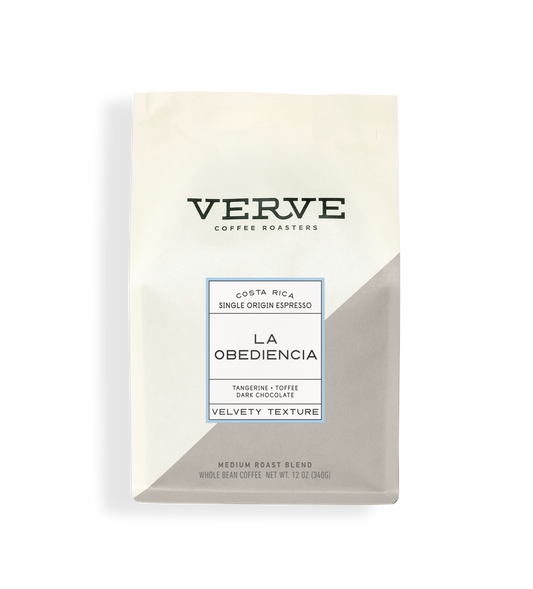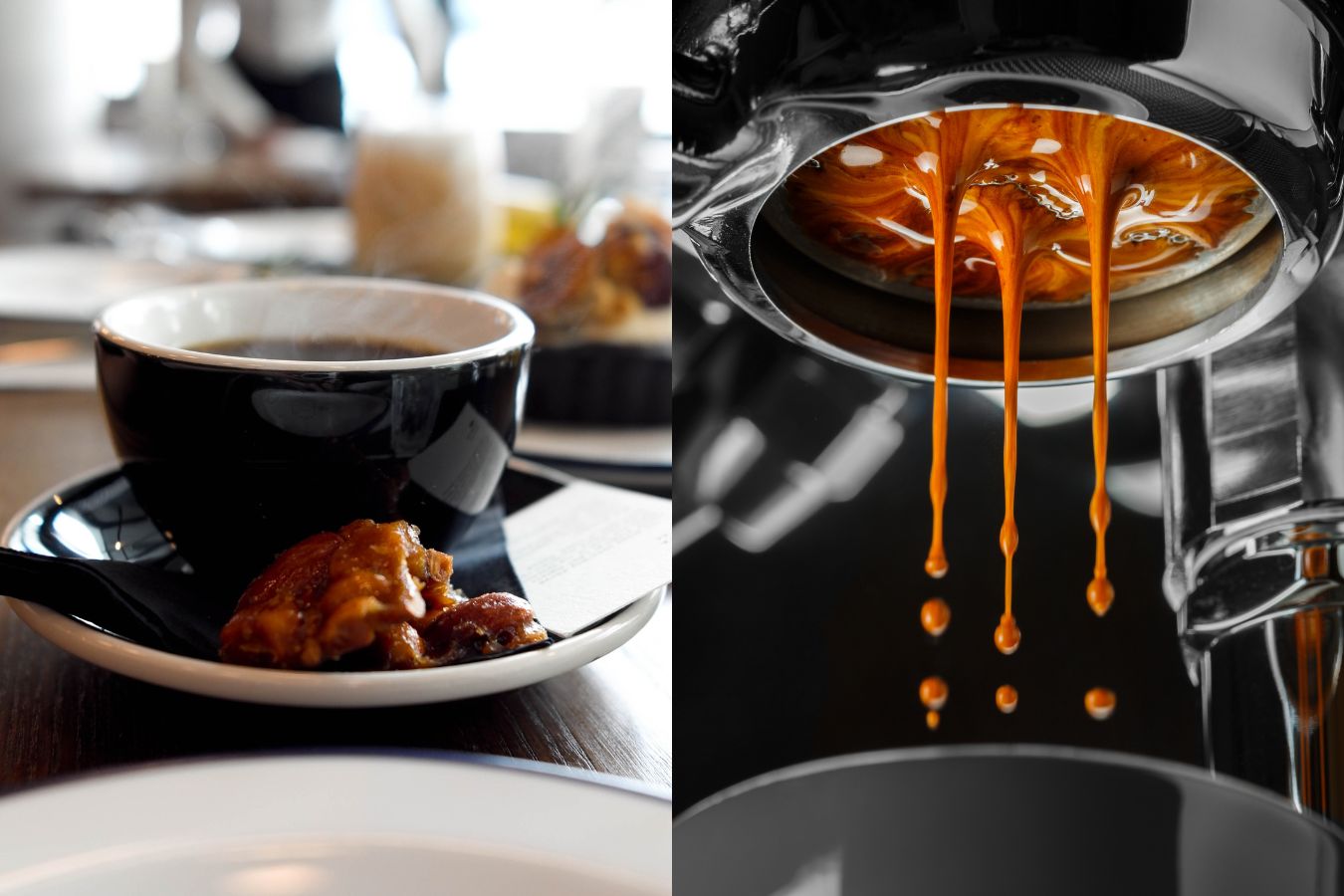Helpful Hints to Get the Best Out of SOE Single Origin Espresso
Helpful Hints to Get the Best Out of SOE Single Origin Espresso
Blog Article
Coffee Beans 101: Whatever You Required to Learn About Coffee and Blended Coffee Beans
When it comes to coffee, comprehending the nuances of espresso and blended beans can change your day-to-day cup. From the growing process to toasting strategies, every step plays a function in your coffee experience.
Recognizing Coffee Beans: Varieties and types
When diving right into the world of coffee, recognizing the types and varieties of coffee beans is important for every single fanatic. You'll primarily come across two primary varieties: Arabica and Robusta. Arabica beans are understood for their smooth, intricate flavors and reduced high levels of caffeine content, making them a favorite amongst coffee connoisseurs. On the various other hand, Robusta beans pack a strike with a more powerful, more bitter taste and higher caffeine levels, usually used in espresso blends.
Within these varieties, you'll discover various regional ranges, each bringing special features. For example, Ethiopian Yirgacheffe supplies bright floral notes, while Colombian beans supply a well-balanced flavor account. As you explore, keep in mind to focus on handling approaches like cleaned or all-natural, as they can substantially influence the final preference. By acquainting yourself with these beans and their flavors, you'll elevate your coffee experience and make even more enlightened selections in your developing trip.
The Expanding Process: From Seed to Bean
When you explore the journey of coffee, all of it starts with seed choice strategies that set the structure for top quality. From there, growing and collecting play crucial functions in guaranteeing the beans grow. Processing methods transform those gathered cherries right into the coffee beans you love.
Seed Option Techniques
Choosing the appropriate seeds is vital for creating high-quality coffee beans, as it lays the structure for the entire expanding procedure. Pay interest to the seed's age and storage space conditions, as fresh seeds have a tendency to germinate far better. Take into consideration the illness resistance of different varieties, as this can considerably affect your yield.
Cultivation and Harvesting
As you support your coffee seeds into growing plants, recognizing the growing and harvesting process is essential for accomplishing the ideal flavor and top quality. Begin by growing your seeds in well-draining soil, preferably in a shaded area to protect them from straight sunlight.
Hand-picking is commonly the ideal technique to assure only the ripest cherries are picked. Timing is important; harvesting also early or too late can affect the taste profile of your beans.

Processing Techniques Described
Once you have actually collected your coffee cherries, the following vital action is refining them to transform those dynamic fruits into the beans you'll make. There are 2 main methods: the completely dry procedure and the damp procedure. In the dry process, you spread the cherries out in the sunlight to dry, enabling the fruit to ferment and impart distinct tastes to the beans. On the other hand, the wet process involves removing the fruit instantly and fermenting the beans in water, causing a cleaner taste. After processing, the beans are hulled, arranged, and typically dried once again. Each approach affects the taste profile, so trying out with both can assist you uncover your preferred mixture. Recognizing these approaches is key to enjoying your coffee experience.
Roasting Techniques: Just How Taste Is Established
When it pertains to roasting coffee beans, understanding roast degrees is vital to revealing their unique tastes. Each toasting method impacts the aroma and boosts the taste advancement process, offering you a richer coffee experience. Let's explore just how these elements collaborated to raise your daily mixture.
Roast Levels Explained
Roast degrees play a crucial function in forming the taste account of your coffee. By comprehending these levels, you can much better choose a coffee that matches your taste choices. Experiment with various roasts to find which one resonates with you, improving your total coffee experience and satisfaction.
Influence On Scent
The roast level not just affects the taste of your coffee but likewise substantially influences its aroma. Each roasting technique launches different volatile substances, forming exactly how your coffee scents. In addition, the freshness of the beans plays a vital role; freshly baked coffee releases more fragrant oils, improving that attracting aroma.
Taste Advancement Process
As you discover the taste advancement process, you'll discover that toasting techniques play a crucial role in forming the taste profile of your coffee. The toasting temperature and time straight influence the acidity, sweetness, and bitterness of the beans. Light roasts retain more of the bean's original flavors, highlighting fruity and floral notes. Medium roasts balance acidity and body, providing a well-shaped flavor. Dark roasts, on the various other hand, draw out bold, great smoky attributes while reducing the bean's fundamental top qualities. Throughout roasting, chemical reactions, like the Maillard response and caramelization, transform the beans and enhance their complexity. Try out various roasting levels can assist you locate your ideal mixture, so do not be reluctant to taste and find the abundant range of flavors!
Espresso vs. Blended Coffee: Key Distinctions
Espresso and mixed coffee each deal special experiences that deal with different tastes and preferences. Espresso is a focused coffee this contact form brewed forcibly warm water with finely-ground coffee beans, leading to an abundant, strong taste and a luscious layer of crema on the top. It's typically taken pleasure in as a shot or made use of as a base for drinks like coffees and lattes.
On the various other hand, combined coffee integrates various beans from different regions, producing a much more balanced taste profile. You'll usually locate blends that highlight level of acidity, body, or sweet taste, making them versatile for different developing techniques. While coffee concentrates on strength, combined coffee might use a wider variety of tastes that can change with each sip.
Inevitably, your selection between coffee and blended coffee boils down to your individual preference. Whether you long for a fast jolt or a leisurely mug, both options have something delicious to offer.

Brewing Methods: Opening the Perfect Cup
When it concerns brewing coffee, finding the right approach can transform your experience and raise your cup. Each developing strategy has its one-of-a-kind beauty and can greatly impact your coffee's taste and aroma. For instance, using a French press enables you to appreciate a rich and robust mixture, while a pour-over method gives a clean, brilliant mug with distinct flavors.
If you like coffee, buying a top quality equipment can help you grasp the art of drawing shots. For comfort, a single-serve case system uses rate without compromising preference.
Don't ignore cold mixture, which delivers a smooth, much less acidic coffee suitable for warm days. Trying out various approaches to uncover what reverberates with your taste buds. Each brewing method opens a new world of possibilities, so take why not try these out the time to explore and find your ideal mug. Satisfied brewing!
Tasting Notes: Identifying Taste Profiles
How can you really appreciate your coffee if you do not know what flavors to search for? Tasting notes are your overview to recognizing the complex world of coffee. Pay focus to the preliminary flavors that hit your palate when you drink. You could identify fruity notes, like berry or citrus, or probably a nutty touch. As you continue to taste, see just how the flavors develop-- this is called the "surface." Some coffees could leave a chocolatey or sugar aftertaste, while others may have an intense, tidy surface.
Take into consideration the body of the coffee, also; is it light and airy or thick and syrupy? Don't neglect level of acidity; a brilliant level of acidity can include vigor, while a reduced level of acidity might provide a smoother experience. By recognizing these taste accounts, you'll strengthen your link with each cup, making coffee tasting a fascinating journey of exploration.

Tips for Picking and Storage Coffee Beans
Keeping and choosing coffee beans effectively can significantly improve your developing experience. Start by selecting high-quality beans that fit your preference - SOE.
When you have your beans, save them in an impermeable container to avoid direct exposure to light, air, and moisture. A dark, awesome area works best, so stay moved here clear of keeping them in the fridge or freezer, as this can introduce moisture. Only grind the quantity you require to maintain freshness; whole beans keep taste longer than pre-ground coffee.
Lastly, attempt to utilize your beans within two to four weeks after opening for peak preference. Complying with these tips will certainly assure your coffee stays enjoyable and delicious, raising your daily mixture to new heights.
Often Asked Concerns
How Lengthy Do Coffee Beans Remain Fresh After Roasting?
Coffee beans stay fresh for regarding two weeks after roasting - SOE. You need to save them in a closed container, away from light and moisture. Afterwards, their flavor and aroma start to diminish significantly

Can I Mix Different Coffee Bean Varieties?
Definitely, you can mix different coffee bean selections! Try out blends can enhance tastes and develop an one-of-a-kind preference profile. Simply make certain to balance the toughness and characteristics of each range for the finest results.
What Is the Suitable Grind Dimension for Coffee?
For coffee, you'll want a fine grind size, concerning the appearance of salt. This allows optimal extraction, resulting in an abundant, delicious shot. Experiment a little bit to locate what matches your preference best!
Just How Does Altitude Affect Coffee Bean Taste?
Elevation affects coffee bean taste by affecting the development rate and chemical composition. Higher elevations lead to slower maturation, which enhances acidity and complexity, offering your coffee a distinct and vivid preference you won't neglect.
Are There Decaffeinated Versions of Espresso Beans?
Yes, there are decaffeinated variations of espresso beans. You can appreciate a rich coffee taste without the caffeine kick. Simply search for "decaf" blends at your neighborhood cafe or specialized store.
Coffee Beans 101: Whatever You Required to Know Concerning Espresso and Blended Coffee Beans.
When diving into the world of coffee, understanding the kinds and varieties of coffee beans is necessary for every enthusiast.When it comes to roasting coffee beans, comprehending roast levels is key to exposing their unique tastes. Espresso is a focused coffee made by compeling warm water through finely-ground coffee beans, resulting in an abundant, bold taste and a luscious layer of crema on top.On the other hand, blended coffee integrates numerous beans from different regions, producing an extra balanced taste profile.
Report this page